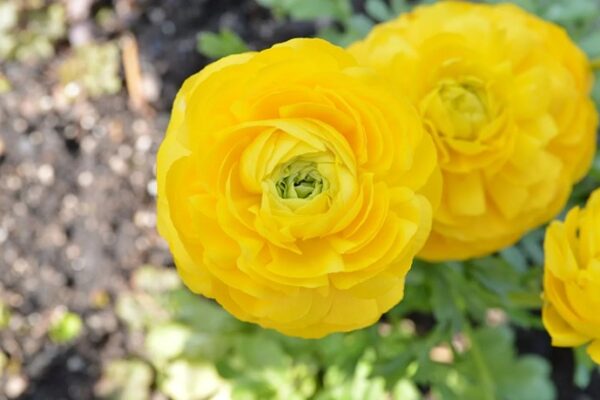How to take care of indoor plants: A guide
Taking care of indoor plants is a rewarding experience that can bring life and beauty to any living space. However, it can be a daunting task for beginners, as different plants require different levels of care. To ensure the health and longevity of your indoor plants, it is important to understand their individual needs and provide proper care. Understanding the specific needs of each plant is crucial when learning how to take care of indoor plants.
Indoor plants have become increasingly popular in recent years, as they provide a natural and aesthetically pleasing element to any home. Not only do indoor plants enhance the overall look and feel of a space, but they also have numerous health benefits such as improving air quality and reducing stress levels. With the variety of indoor plants available, you can create a unique and personalized living space.
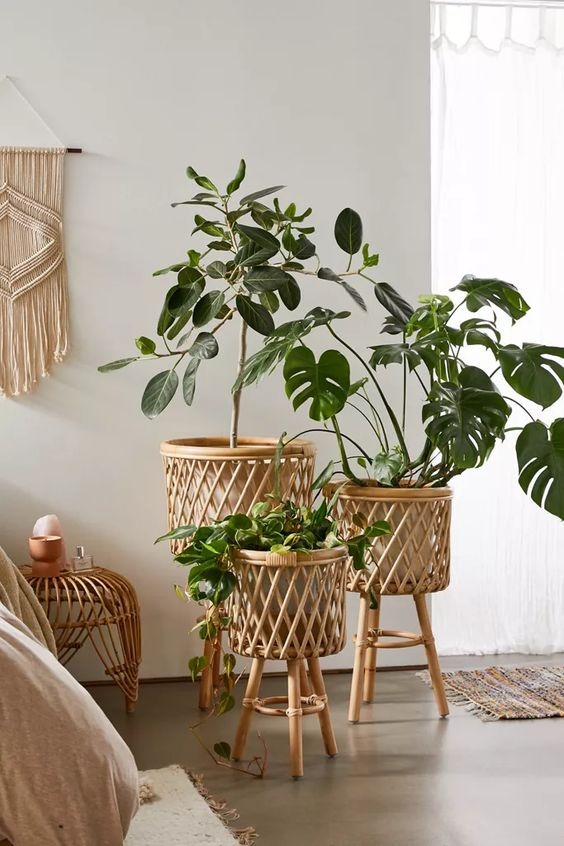
Consider the lighting requirements of your indoor plants. Some plants require direct sunlight, while others thrive in low light conditions. Be sure to place your plants in areas that match their specific lighting needs. It’s essential to keep an eye out for any pests or diseases that can harm your indoor plants and take action immediately.
Watering is a critical aspect of taking care of indoor plants, and over or under-watering can be harmful. Water your plants properly. Generally, plants should be watered when the top inch of soil is dry to the touch. However, it is important to research the watering needs of each individual plant, as some require more or less frequent watering.
In addition, fertilizing your indoor plants can help promote healthy growth. Use a fertilizer specifically designed for indoor plants, and follow the instructions carefully to avoid over-fertilizing. Proper drainage is necessary when taking care of indoor plants to avoid water accumulation and root rot.

Plants are a great way to purify the air in your home, helping you breathe easier. With indoor plants, you can add life and energy to any room. Whether you prefer low-maintenance or high-maintenance plants, there is an indoor plant for you.
1. String of Pearl
Care Level: Intermediate
Named for its stunning round leaves, the Pearl plant lives up to its name. This succulent vine, part of the Asteraceae family and originating from Southwest Africa, can grow trailing stems of nearly a meter in length. To ensure its well-being, use well-draining soil and place the plant in bright indirect light with enough water to keep the soil consistently moist. With minimal effort, you’ll soon be rewarded with lengthy strands of pearls. The plant’s cascading vines can be beautifully displayed in a hanging pot.
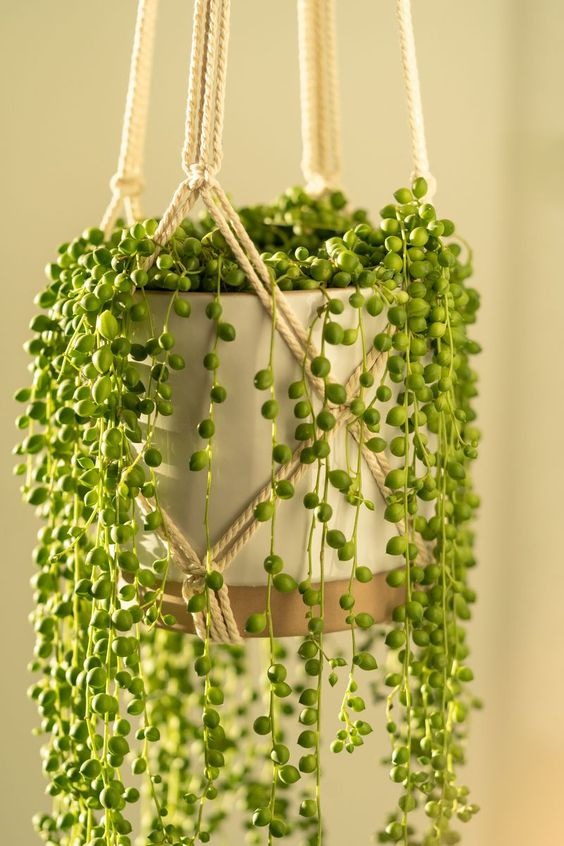
2. Pothos
Care Level: Easy
The Sill Silver Satin, also known as the satin pothos, is a great choice for a low-maintenance indoor plant. Its leaves have a shimmery quality that catches the light beautifully. To care for this plant, place it in an area with partial to bright indirect light and water it when the soil is mostly dry. You can easily expand your collection by propagating the plant through cuttings. With its gray trailing vines, the silver satin looks stunning on bookshelves or kitchen windowsills. It’s known for its adaptability to different environments, making it one of the easiest houseplants to keep alive. If you’re new to propagating, this fast-growing vine is an excellent option to try.
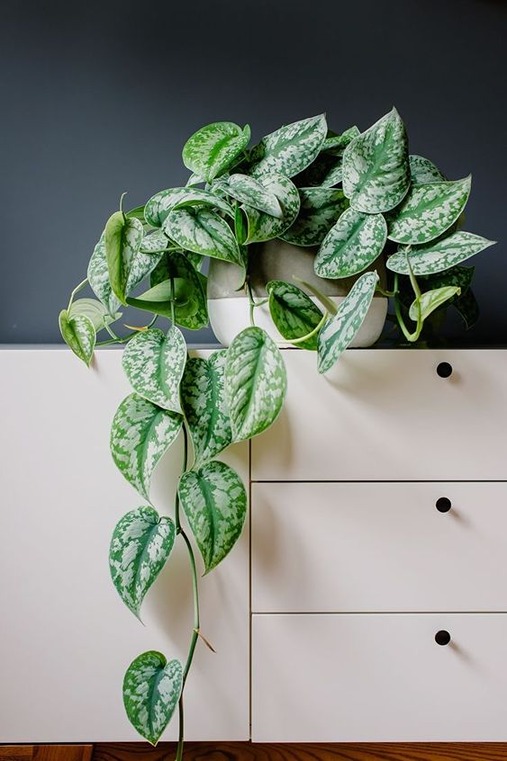
3. Rubber Plant
Care Level: Intermediate
Belonging to the fig family, the rubber plant is a durable and rapid-growing indoor plant that can easily occupy any space. It boasts broad, shiny, dark-green leaves and in its native Southeast Asia, can reach heights of over 30 meters. To thrive, this plant needs bright indirect light and should only be watered when the soil is dry. Apart from being an attractive addition to any room, rubber plants are also known for their excellent air-purifying properties. Placing them near your preferred seating area will allow you to enjoy the benefits of fresher air.
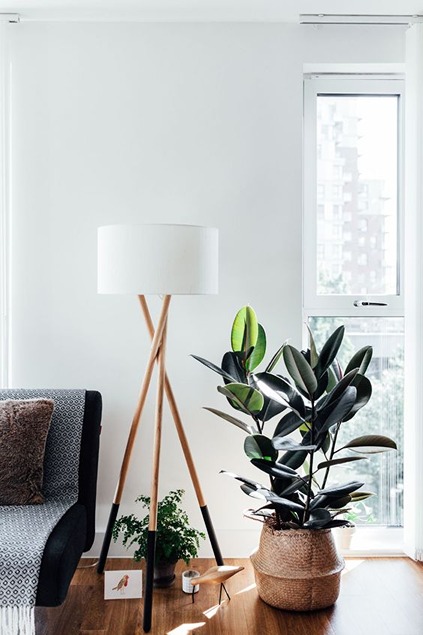
4. Citrus Tree
Care Level: Easy
Introduce a delightful aroma of the Mediterranean into your abode with an Orange Tree. Although originating from subtropical Asia, this evergreen fruit tree is more commonly linked with sunny Mediterranean regions. Citrus Tree also known as Mini Orange Tree. A clementine tree will make you reminisce about your summer holidays abroad. During springtime, your home will be filled with the scent of jasmine. Orange trees prefer full to partial light and need watering weekly, allowing the soil to dry out in between. With its beautifully fragrant leaves, this plant will leave your home smelling divine. For the juiciest oranges, keep your Orange Tree well hydrated and the taste of tangy juice will be well worth the effort. This plant is accustomed to hot conditions and thrives with plenty of sunlight – the more sunshine, the sweeter the oranges. In the heat of summer, treat your Orange Tree to some sunbathing on your patio, just remember to move it somewhere warm during the colder months. An Orange Tree will not only elevate your home decor but also your daily life.
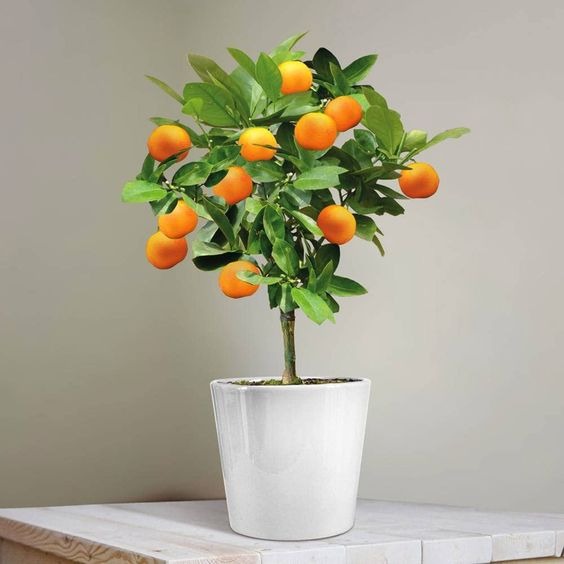
5. Watermelon Peperomia
Care Level: Easy
The Peperomia argyreia, also called the watermelon peperomia or watermelon begonia, belongs to the Piperaceae plant family and is indigenous to northern South America. Despite its names, it is not related to either watermelons or begonias. This low-maintenance houseplant enjoys low to bright indirect light and can tolerate occasional missed watering. Unlike other peperomia species, this easy-to-care-for plant with watermelon-like leaves should not be placed in direct sunlight as it can cause the leaves’ colors and patterns to fade. Being native to the cool understory of South American rainforests, the watermelon peperomia requires watering only when its leaves droop. For a stunning planter, choose a smaller one as peperomia prefers being root-bound.

6. Anthurium
Care Level: Intermediate
With their striking, futuristic appearance and waxy, heart-shaped leaves featuring a prominent stamen at the center, these houseplants are unapologetically flamboyant and can add a burst of color to any home. Often called Flamingo plants due to their dramatic foliage, they are believed to represent happiness and abundance. Despite their extravagant looks, they are surprisingly low-maintenance. Native to the tropical rainforests of Central and South America, they thrive in humid conditions and prefer to be kept away from the cold. For optimal growth, place them in bright, indirect light and water every one to two weeks, with occasional fertilization. These qualities make them an ideal choice for novice plant enthusiasts.

7. Succulents
Care Level: Easy
Succulents are plants that have adapted to store water in their thickened, fleshy leaves and stems, hence the name derived from the Latin word ‘sucus’ which means juice or sap. They can survive on limited water resources, such as dew or mist, and are therefore drought-tolerant. Requiring only a small amount of water, a set of four to six succulents can easily add a touch of greenery to your home without demanding much maintenance. With numerous cultivars available, succulents are an excellent choice for those new to plant parenting.
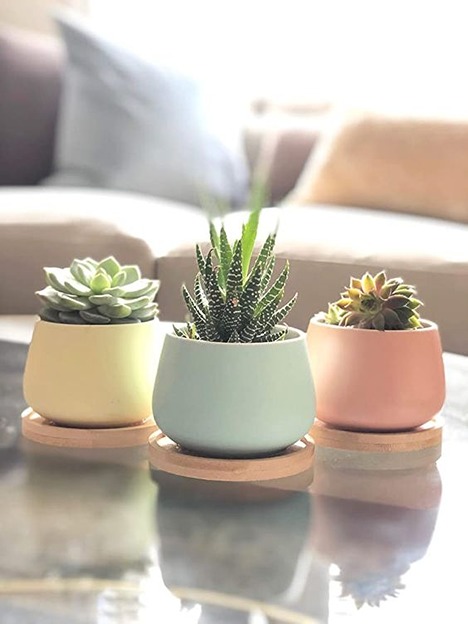
8. African Violet
Care Level: Easy
You can easily care for African violets indoors, as they thrive under bright and indirect light, and they also add a pop of purple to any room. Make sure to keep the soil lightly moist, but avoid overwatering, as the plant’s soft stems can be prone to rot. For best results, place African violets in bright, indirect light, away from direct sunlight or bright south- or west-facing windows. East- or north-facing windows provide the ideal lighting without damaging the sensitive foliage. During the active growing season, fertilize with a high-phosphorus plant food every 2 weeks or when the plant shows signs of needing a boost, such as slow growth, pale or yellowing leaves.
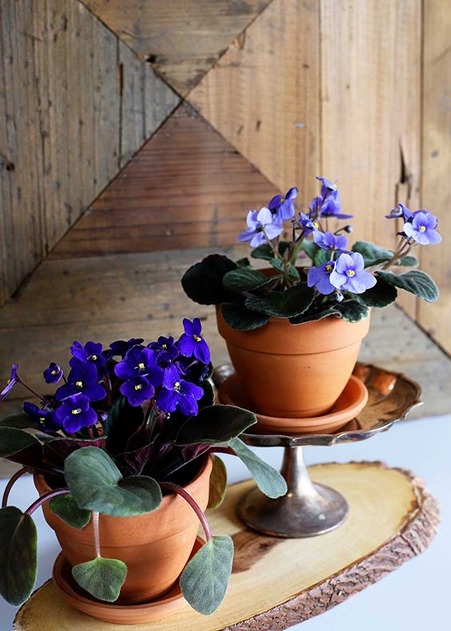
9. Juniper Bonsai
Care Level: Easy
The Juniper bonsai tree can be a great addition to any space, whether it’s an office or a living room. As with any bonsai, it requires regular watering, but it’s important not to overdo it. Allow the soil to dry out slightly (but not completely) between waterings, and then give it a good pour. This species also requires a few hours of direct sunlight each day, so make sure to place it in a sunny location. Additionally, to keep your Juniper bonsai tree thriving, it’s essential to prune it regularly and to feed it with a balanced fertilizer during the growing season. With proper care and attention, your Juniper bonsai tree will continue to flourish for many years to come.
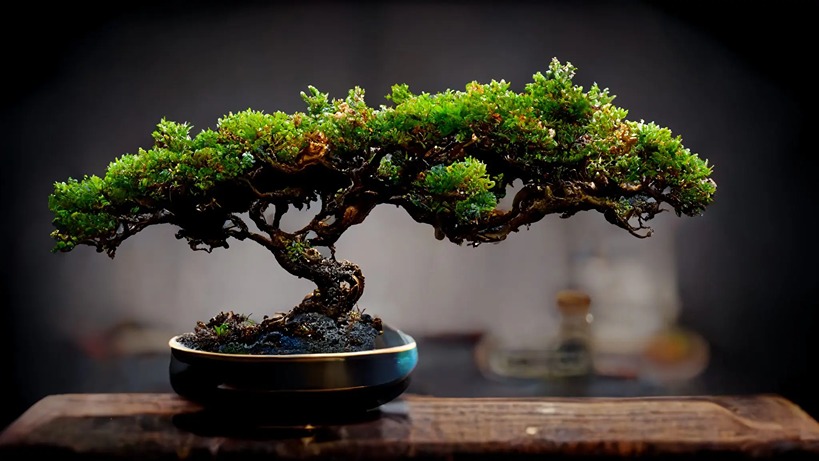
10. Pilea
Care Level: Intermediate
The Pilea Raindrop is just one variety of the Peperomia plant family, which includes about 500 species. These low-maintenance plants have gained immense popularity because of their ability to survive on minimal care. Despite its name, this leafy plant is not related to pepper but derives its name from the Greek word for pepper. With its shiny green leaves, this plant is a charming addition to any indoor space. Keeping your Raindrop Peperomia healthy is quite easy as it doesn’t require much attention. It thrives in warmth and indirect light, although it can also tolerate some shade. Watering is only necessary once the soil has completely dried out, as the succulent leaves store water. During the winter months, it’s crucial not to overwater the plant.
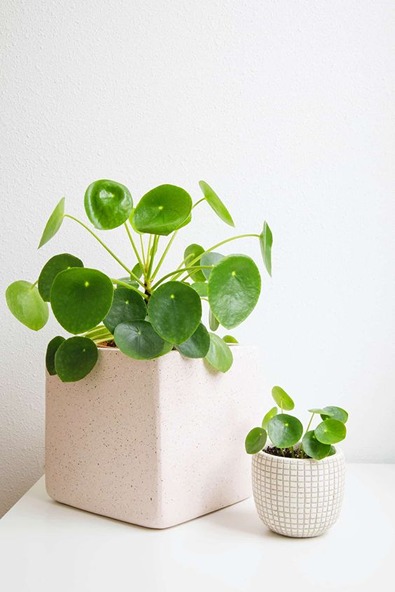
11. Bird of Paradise
Care Level: Intermediate
Indigenous to South Africa, the Strelitzia plant boasts exotic and eye-catching paddle-shaped leaves on long, graceful stems, creating an intriguing focal point in any room. The leaves are a stunning glossy dark green, with natural splits that the plant uses to allow light to reach younger leaves. This unique feature adds to the plant’s appeal and charm. It is an ideal low-maintenance houseplant that will make a bold statement in your home. The Strelitzia plant prefers a bright and sunny location to thrive, but it can tolerate lower light levels. During the active growing season of spring and summer, it will benefit from regular fertilization. The Strelitzia plant is easy to care for, as long as you avoid overwatering it.
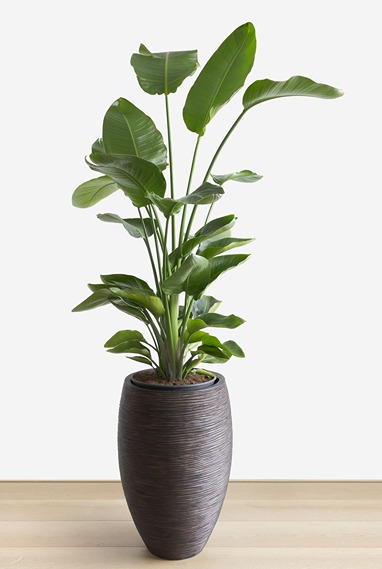
12. Rattlesnake Plant
Care Level: Intermediate
The Calathea family is comprised of plants that are renowned for their unusual leaves which fold up during the night. Rattlesnake plants, a member of the Calathea family, are known to get scorched or fade in bright light, which is why they thrive in areas with filtered light. It’s important to remember that watering schedules should vary depending on the season. In the spring and summer, it may be necessary to water your plant more frequently to maintain consistently damp soil. Since rattlesnake plants are tropical indoor plants, it’s important to mist them regularly to mimic a high-humidity environment. By doing this, you’ll help ensure that your plant stays healthy and vibrant.
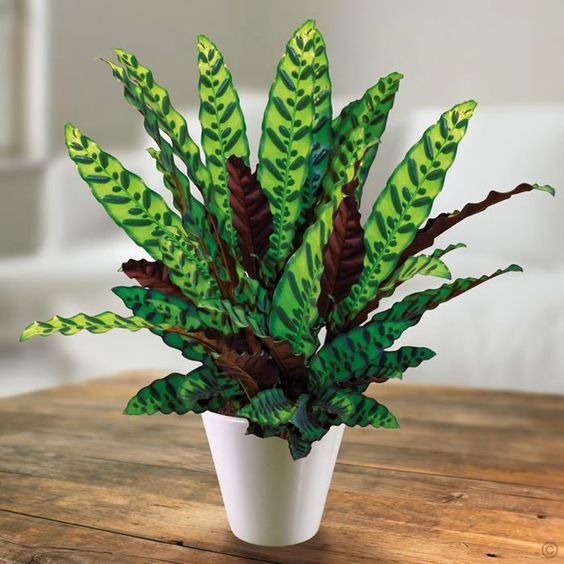
13. Snake Plant
Care Level: Easy
Snake plants, which are native to Southern and Central Africa, are a type of succulent that thrive in medium to bright light and require watering only once every two weeks, making them easy to maintain. Their sword-like leaves feature striking, vibrant yellow edges that add a pop of color to any room. A unique feature of snake plants is that they release oxygen during the night, while most plants release oxygen during the day, making them a perfect choice for a bedroom or other low-light environments. Additionally, snake plants are excellent air purifiers, removing toxins such as benzene and formaldehyde from the air. They are also known to be pet-friendly, making them an excellent choice for households with furry friends.

14. ZZ Plants
Care Level: Easy
If you’re looking for an easy-to-care-for houseplant, consider the ZZ plant. With its thick stems and glossy leaves, it’s an eye-catching addition to any space. One of the best things about ZZ plants is that they require infrequent watering, making them ideal for those who tend to forget or are new to caring for plants. ZZ plants thrive in low to bright indirect light and can handle some shade. To determine if your plant needs water, simply check the leaves. If they start to wrinkle, it’s time to give it a drink. Keep in mind that ZZ plants are toxic to pets, so it’s important to keep them out of reach. In addition to being low maintenance, ZZ plants are also great at purifying the air in your home. They remove toxins such as benzene and formaldehyde, making them a great choice for improving air quality.


